Packing for an expedition in Antarctica sounds intimidating and for a good reason. The Antarctic environment is inhospitable, also unpredictable, and potentially dangerous especially if you are not well prepared.
We’ve been on an expedition to Antarctica between December 21, 2021 and January 5, 2022. This article is revised after our return based on what we used and what we needed on our expedition to the southern continent.
Aboard The Ship
Clothing aboard the ship is mostly casual except for the Captain’s Welcome Aboard and Farewell gatherings, which are informal.
Casual wear
The daytime casual wear consists of sports outfits. After all, you never know when a group of whales show up and you want to be able to go out on deck to see them. In the evenings, open-neck shirts, trousers, and casual wear are appropriate, but the majority will still wear sports outfits.
Informal wear
This is not a wedding or a ball, so there’s no need to over exaggerate with the outfit. It is however a special, informal diner, but there’s no need to go as far as wearing a tie. Since these events might happen during a day at sea, I personally don’t recommend wearing heels.
Ashore
The most important aspect you should focus on is your clothing. You don’t want to get cold, not to mention wet. We also want to preserve and protect Antarctica, so make sure to clean very well your boots and other clothing items to avoid taking any seeds or foreign bacteria to the frozen continent. They will do a biosecurity check on the ship, so don’t obsess with it, but be careful.
First and foremost, when people hear of Antarctic expect to see the coldest weather they have ever experienced. Don’t forget that you are going in Antarctic during summer time. If you’re from Florida, it might seem cold for you, but if you regularly have cold weather and snow where you live, then it might seem like a rather warm day of winter. The temperature is around 0 degrees Celsius (32 Fahrenheit), the element that has the most impact on real feel is the wind. However, if the wind is too strong, all outside activities will be canceled for safety reasons.
The best way to gear up is layering. This way you are prepared for warmer days as well as colder ones. You should also consider that people feel cold differently. Some people might want to get some heavier layers, while others will be just fine with lighter ones.
The amount of physical effort you make also impacts how cold or warm you get. If you have a long walk ahead of you be prepared to take some layers off. If you’re going for a zodiac cruise, put on an extra layer as you will be standing still.
Base Layer
The base layer refers to the first layer of clothes that you will take directly on your body. It is sometimes also called underwear (although it does not refer to your bras, panties, or boxers). The base layer needs to be breathable, keep you warm, and wick moisture away quickly to keep you dry.
The best materials for this layer are merino wool and synthetic technical ones like Capilene from Patagonia. We personally prefer wool for the base layer. Synthetic materials tend to smell quickly and to create more static electricity.
When it comes to merino wool base layers, you can opt for different weights. The weight is measured as the fabric’s weight in grams per square meter. The bigger the weight number, the thicker the material, and the warmer you will be. The graph below illustrates the different types of weight for wool products.
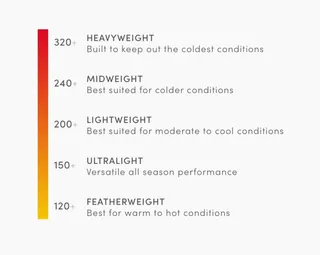
Our go-to options are lighweight merino wool products with a weight of either 200 or 240. These options are good for cold conditions. Remember that you will be layering, and the heavyweight might be a bit too much for some people. We would personally go as far as 320 for under -10 Celsius (14 Fahrenheit).
The following are the base layers that we used in Antarctica:
Women
- trueIcebreaker Merino Women’s 200 Oasis Long Sleeve Crewe Top
- trueFjällräven Abisko Wool Long Sleeve
- trueIcebreaker Merino Women’s 200 Oasis Leggings
Men
- trueIcebreaker Merino Men’s 200 Oasis Long Sleeve Crew Neck Base Layer Top
- trueIcebreaker Men’s 200 Oasis Leggings with Fly
You should carry at least 2 pieces each so you always have a clean one when you wash the other.
Mid Layer
The mid-layer is worn over your base layer. It adds an extra barrier against cold without making you too bulky. It should be smooth on the outside for easy layering. You can opt for a heavyweight, mid-weight, or lightweight fleece.
Personally, I prefer wearing 2 lightweight fleece layers if necessary rather than a heavyweight one. That’s because I overheat quickly and I prefer feeling a bit cold rather than too hot. Being able to take a layer off and prevent overheating is extremely helpful. Taking the heavyweight fleece off might be too much though. Nevertheless, we didn’t need to use 2 fleece layers in our expedition to Antarctica.
Like base layers, the available materials are wool or synthetic ones. For this layer, we prefer synthetic materials because they are extra light and quick-drying.
There are mid-layers for both top and bottom. The fleece pants can be either long, capri, or shorter. Most men may not need to wear mid-layer fleece pants on sunny days. I prefer capri length pants, and not full length because I have wide calves and I want to be able to keep the mid-layer pants out of my boots. As a woman, I prefer putting on the mid-layer pants and if I get too hot I can always open the side zips of my waterproof pants to cool down. That is true only for Antarctica. In the Falkland Islands I had a single pair of base layer pants and the waterproof pants and it was still too hot.
Zodiac crusing and Kayaking are a different story, so please read our articles dedicated those experiences:
 Travelfoss
Travelfoss
 Travelfoss
Travelfoss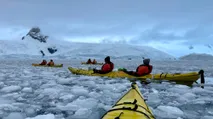
Here are our go-to options when it comes to mid-layers:
Women
- trueArc’teryx Women’s Delta Lt Jacket Women’s - a bit too light for colder days.
- trueFjallraven Women’s Skare Half Zip - this can be used either as a base layer or as a mid-layer. I prefer using it on top of my merino base layer and under my full zip fleece on very cold days or for zodiac cruising.
- trueThe North Face Women’s W Kyoshi Full Zip Jacket - my prefered mid-layer fleece.
- The North Face Under Knee Fleece Pants - could not find them on Amazon anymore.
- Adidas Long Fleece Pants - could not find them on Amazon anymore.
Men
- trueSalomon Men’s Outline Mid Jacket
- trueFjallraven - Men’s Abisko Trail Fleece
- trueThe North Face Men’s Borod Full Zip
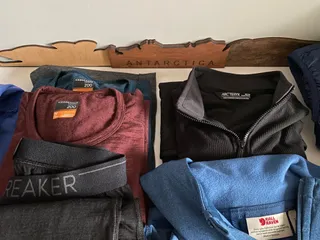
Insulation Layer
Keep in mind that the parka that you receive on the ship might also includes an insulation jacket, not just the shell jacket. You should check this out with the company you are cruising with. I only used the insulation layer on very windy and cold days and for zodiac cruises. I was even too hot once with it. Stefan only used the insulation layer that came with the complimentary parka.
There are numerous ways to pair this layer with your other layers. For very cold days you can wear it over the mid-layer and under your parka. For average days you can use it without your mid-layer or you might not need it at all.
Outer Layer
The outer layer is extremely important because it is your main shield against the Antarctic environment. Most Antarctic expedition cruises will provide a parka to their guests, so the only thing you should worry about is to order your size with your cruising company. If you are not sure, you should check with your agent the information regarding the parka jacket.
The parka is windproof and waterproof, but you will most likely receive it on the ship. If you are unlucky with the weather between the airport and the ship you might need to use a lightweight rain jacket. However, the time you spend outside is negligible, we never used our lightweight rain jackets.
Waterproof pants are a must! They will help you stay dry during zodiac rides and during wet landings where you will need to step into the water that goes over your ankles. The waterproof pants should be wide enough to fit over your boots. Yes, they should be worn over the boots, and not inside them. If you wear the pants inside your boots you risk for water to enter in your boots, even in knee-high boots. I’ve seen this happen to other people and getting wet is the last thing you want. So keep in mind: pants over boots.
Some readers have asked about using ski or snowboard pants instead of waterproof pants, so we wanted to share our insights on this matter. The ski/snowboard pants can be a bit bulky compared to layering, but the main concern about them are the wet landings. You will wear knee high boots and not all ski/snowboard pants fit over those boots. Additionally, the thin waterproof pants will stick to the boots when submerged in water preventing the water from going up between the pants and the boots. The bottom part of the ski/snowboard pants will simply get wet and offer no protection when stepping in deep water. The waterproof pants are better at keeping water out because they are made of nylon. Ski pants are mostly textile with DWR treatment.
- trueMarmot PreCip Eco Jacket
- trueMARMOT PreCip Eco Full Zip Pant
- Insulated parka (provided aboard the ship on most cruises)
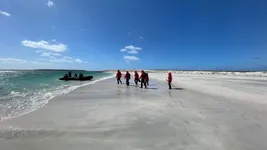
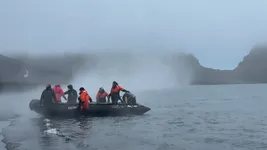
Footwear
Zodiac wet landings require you to step into the water. For this, you need knee-high rubber boots. You will be walking in those boots on land, snow, and ice, so you need good traction and warmth.
Most (if not all) expedition cruises will offer boots for rent on the ship, but you should specify your size before to be sure you will find your size. Renting is the best option if you want to travel lightweight (a pair of boots weighs around 2.5kg), but keep in mind that you risk not having your exact number. If you plan to do other expeditions where you might need this kind of boots, then buying them is the best option. The rental price for a pair of boots is more than half the price of a new pair.
The best boot options that we know of for Antarctic expeditions are:
I don’t know which is best, but we are from the EU and we could not find Bogs available for purchase in Europe since they are made by an American company. Therefore, we went for the Muck boots. However, we did read some reviews that suggested that the Bogs men’s boots have different soles than women’s and that men’s have better traction. Also, women with larger calves are recommended to go for the men’s version anyway.
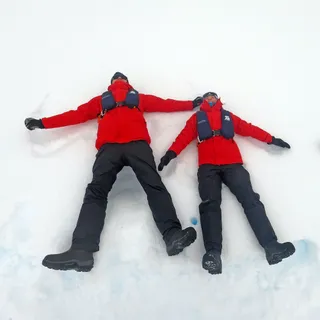
Hats, Gloves, Socks
- Fleece or wool hat (I prefer a neck gaiter)
- Neck gaiters are extremely versatile, you can use them to protect your neck from the cold and your ears and head as well. We usually have at least 2 pieces each in case of bad weather to add some insulation for our necks and ears if the hat is not enough. The neck gaiters that we use are the following: trueFJALLRAVEN Bergtagen Neck Gaiter, trueSalomon Unisex-Adult Rs Warm Tube, trueIcebreaker Merino Adult Unisex Flexi Chute Wool Winter Neck, trueNorth 66 headband (not on Amazon), and trueSalomon neck & head light gaiter unisex (no longer available).
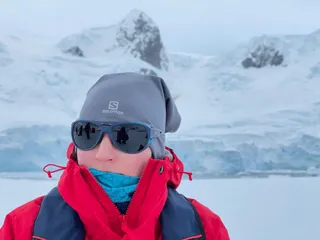
- Heavyweight socks are recommended not only for warmth but for cushioning inside the boots: trueIcebreaker Hike+ Heavy Crew Sock.
- Thin sock liners
- Waterproof heavy gloves (ski-type): trueSalomon Force Dry W, trueSalomon Men’s Standard Propeller Dry Glove. We strongly recommend getting some good gloves with Gore-Tex, like the second option. Otherwise you might risk having your gloves completely wet.
- Glove liners: trueSalomon Gloves Agile Warm Unisex. We weren’t cold enough to use the thin gloves under the heavy ones. We did used the glove liners under the kayaking gloves and sometimes on the outer deck.
- Hand and foot warmers: trueHand Warmers, trueFoot Warmers - we were not cold enough to use them, but we saw other people having this kind of things.
Accessories
- Sunglasses are a must in Antarctica. The sun can shine and the ice reflects a lot of light which can be harmful to unprotected eyes. Even on a cloudy, day if the clouds aren’t thick enough, the light will be too bright. You need a pair of polarized sunglasses with a UV filter. Metal frames are not recommended since they can get cold and harm your skin. It is also good to use a strap to have the sunglasses tied behind your head to prevent losing them. Just like on a glacier or Mont Blanc, the bright light is everywhere, so lateral covers for the sunglasses are also highly recommended. Our go-to option was the trueJulbo Explorer 2 glasses with Reactiv High Mountain 2-4 Photocromatic, Polarized lens, also known as camel or cameleon lens, although we are not 100% satisfied with them.
- Trekking poles are good for increased stability when walking on ice or snow if you are unstable on your feet. We are both sure-footed and we didn’t need them. We already discussed how to choose your trekking poles in another article about false hiking gear. If you are unsure, check with the company that you are cruising as they might have poles for rent so you don’t have to carry them for nothing.
- Binoculars are the best way to watch wildlife close up without disturbing them. We like traveling light, so we went for the small trueOlympus 8x25 WP II Binocular.
- Sunscreen - yes, the sun is strong if you’re lucky to have sunny days.
- Protective lip lotion - cold, dry air and high winds are not friendly with your lips.
- Motion sickness remedies
- Zip-seal bags to keep the camera and phone dry
- Lightweight and waterproof backpack - if not provided on ship.
- Bathing suit sounds a bit weird, but the polar plunge is a common thing in these expeditions to Antarctica.
The Antarctica Essentials Packing Checklist
We shared with you some knowledge to help you understand what it is like in Antarctica and what you need to pack. To make your packing even easier you can get our packing checklist directly.
 Google Docs
Google Docs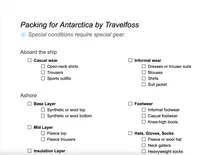
Additional Travel Packing
Besides the essentials that you need to pack for Antarctica, you may need to pack some regular stuff that you use on a daily basis when traveling. We have a false travel packing checklist and also some false tips & tricks for travel packing that you might like. In case you are interested you can check all our articles related to travel packing:
 Travelfoss
Travelfoss
That’s about it, I hope you found our checklist useful. If you consider that we should add anything to this list please let us know in the comments below.
For more Antarctica resource check out our other articles:
 Travelfoss
Travelfoss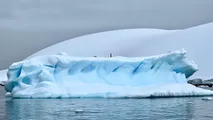
Related Travel Articles
- What to Pack for Antarctica Cruise - Complete Packing List
- 7 Unique Travel Destinations for 2024
- Top Questions About Antarctica Expedition Cruises
- How To Choose Your Cruising Company To Antarctica
- What Are The Excursions You Can Do In Antarctica?
- What You Should Expect From Landings In Antarctica
- What You Should Know Before Booking a Cruise to Antarctica
- The Best Expedition Cruises in Antarctica
- What To Expect From Zodiac Cruising In Antarctica
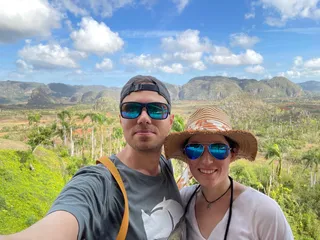
Writing free, independent and personal travel content since 2021. If you appreciate what we do, then you can return the favor by using the affiliate links below.
- Get your accommodations on Booking.com
- Buy your gear and gadgets from Amazon
- Book flights using Expedia
- Book activities on Get Your Guide
- Book guided trips on G Adventures
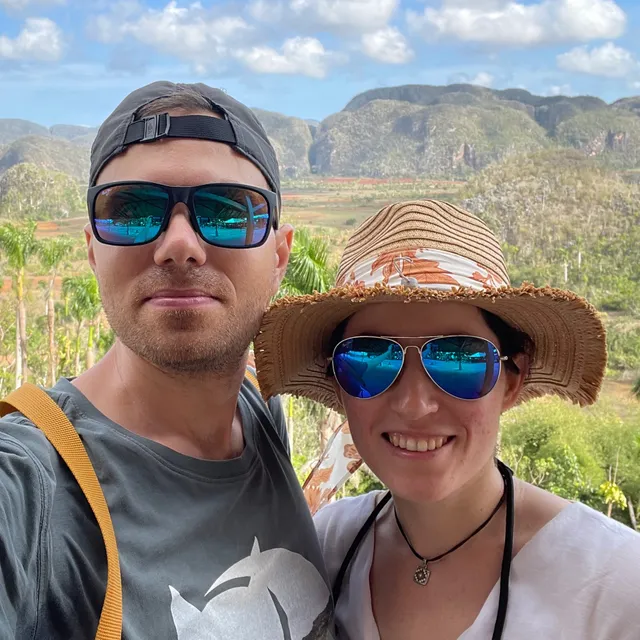
Writing free, independent and personal travel content since 2021. If you appreciate what we do, then you can return the favor by using the affiliate links below with no cost for you.
